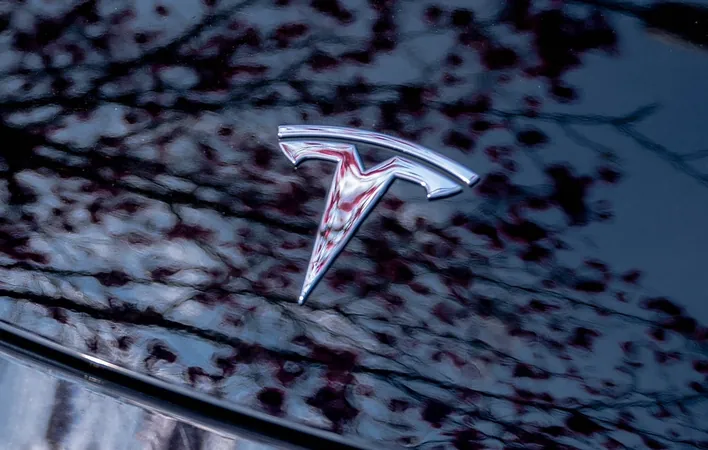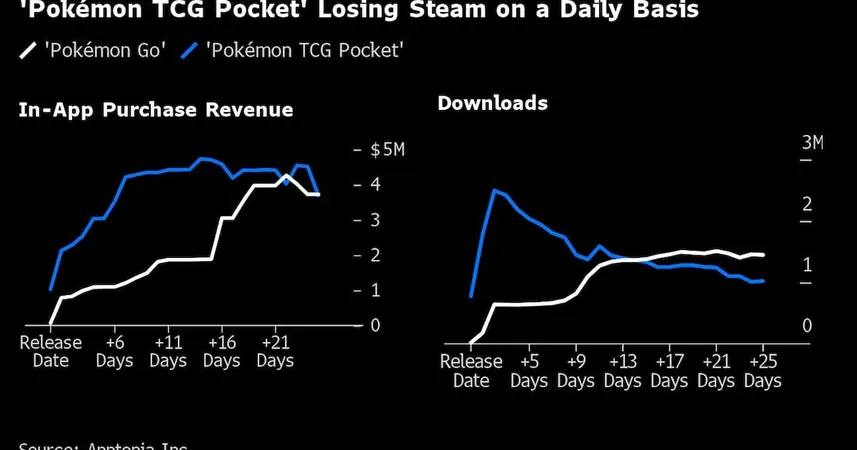
Tesla Dominates Emissions Credits in 2023 Amid Struggles for Other Automakers
2024-11-25
Author: Jacob
Tesla's Emissions Credits Success
In a striking turn of events for the automotive industry in 2023, Tesla emerged as a powerhouse by amassing substantial greenhouse gas emissions credits through its successful portfolio of electric vehicles (EVs). Meanwhile, other automakers faced tremendous challenges, grappling with significant deficits due to stricter emissions regulations.
According to a report from the Environmental Protection Agency (EPA) revealed by Reuters, Tesla earned nearly 34 million metric tons of emissions credits this year. This sharp increase underscores the growing influence of Tesla in the market as more consumers opt for electric vehicles. The EPA’s findings also highlighted an improvement in overall vehicle fuel economy, which rose by 1.1 miles per gallon to reach a record 27.1 mpg in 2023. Predictions suggest this figure could escalate further to 28 mpg in 2024.
Understanding Emissions Credits
The concept of emissions credits plays a crucial role: each carbon offset credit aligns with one metric ton of greenhouse gas emissions, incentivizing companies to manufacture electric vehicles that produce no tailpipe emissions. Conversely, automakers that exceed the EPA’s emissions guidelines face penalties.
Industry Struggles and Deficits
In stark contrast to Tesla’s success, the broader auto industry faced a cumulative deficit of approximately 11 million metric tons of emissions. General Motors (GM) found itself in a particularly difficult position, with a staggering shortfall of 17.8 million metric tons. GM opted to purchase around 44 million credits to offset its excess emissions, part of a troubling trend where traditional automakers are struggling to comply with the evolving regulatory landscape. Altogether, automakers, excluding Tesla, amassed an emissions deficit of 43.5 million credits this year, a significant downturn compared to the generation of 3 million credits in 2022.
Future Compliance and Penalties
The EPA's report indicates a silver lining: the industry still holds a surplus of 123 million metric tons of regulatory credits for future compliance. However, the road ahead may not be smooth, as automakers have previously contested emissions mandates and face new standards between the 2024 and 2026 model years.
In a particularly noteworthy development for GM, the automaker has faced a hefty penalty of $145.8 million. The EPA's investigation revealed that GM had claimed nearly 50 million carbon allowances incorrectly for model years 2012 through 2018, with findings that the company emitted around 10 percent more carbon than stated in its compliance reports.
New Regulations and Industry Outlook
In March, the EPA introduced revised regulations for emissions reduction, mandating a 49 percent cut by 2032 based on 2026 emission levels, a revision down from the initially proposed 56 percent reduction. This change has been perceived as a compromise amid industry pushback against stringent requirements.
Within this shifting landscape, Stellantis—a multinational auto group encompassing the Dodge-Chrysler brands—recorded the lowest fuel economy among traditional manufacturers, trailing GM and Ford, while Tesla consistently led as the most efficient carmaker in this evolving narrative.
Conclusion: The Future of Electric Vehicles
As the industry braces for potential shifts, including an anticipated rollback of stricter fuel efficiency regulations under a future administration, the competition to dominate the electric vehicle market has never been greater. Is Tesla’s lead sustainable, or will traditional automakers find a way to catch up? Stay tuned for more of this unfolding environmental saga!









 Brasil (PT)
Brasil (PT)
 Canada (EN)
Canada (EN)
 Chile (ES)
Chile (ES)
 España (ES)
España (ES)
 France (FR)
France (FR)
 Hong Kong (EN)
Hong Kong (EN)
 Italia (IT)
Italia (IT)
 日本 (JA)
日本 (JA)
 Magyarország (HU)
Magyarország (HU)
 Norge (NO)
Norge (NO)
 Polska (PL)
Polska (PL)
 Schweiz (DE)
Schweiz (DE)
 Singapore (EN)
Singapore (EN)
 Sverige (SV)
Sverige (SV)
 Suomi (FI)
Suomi (FI)
 Türkiye (TR)
Türkiye (TR)